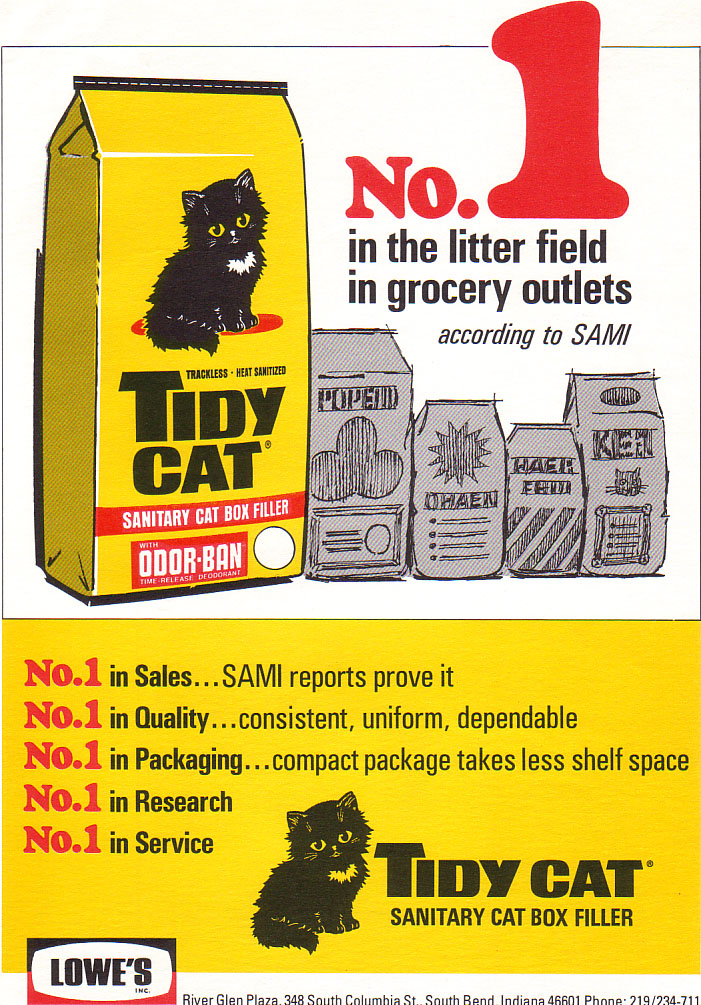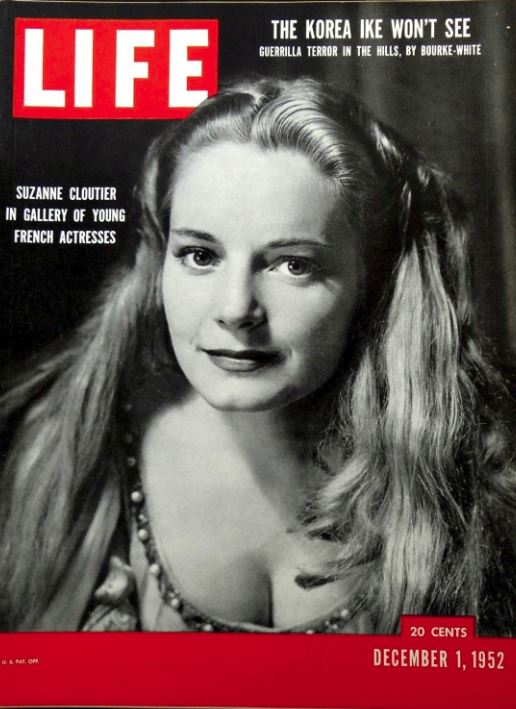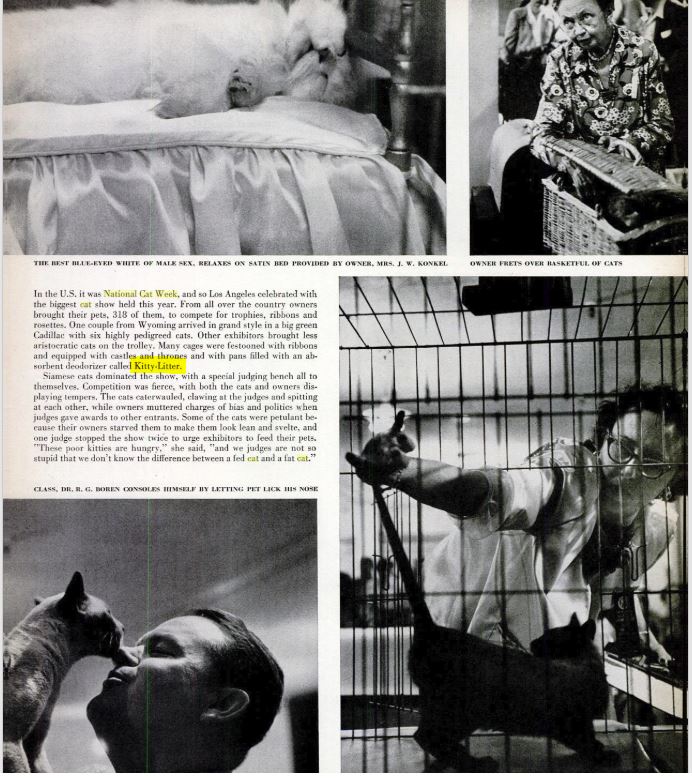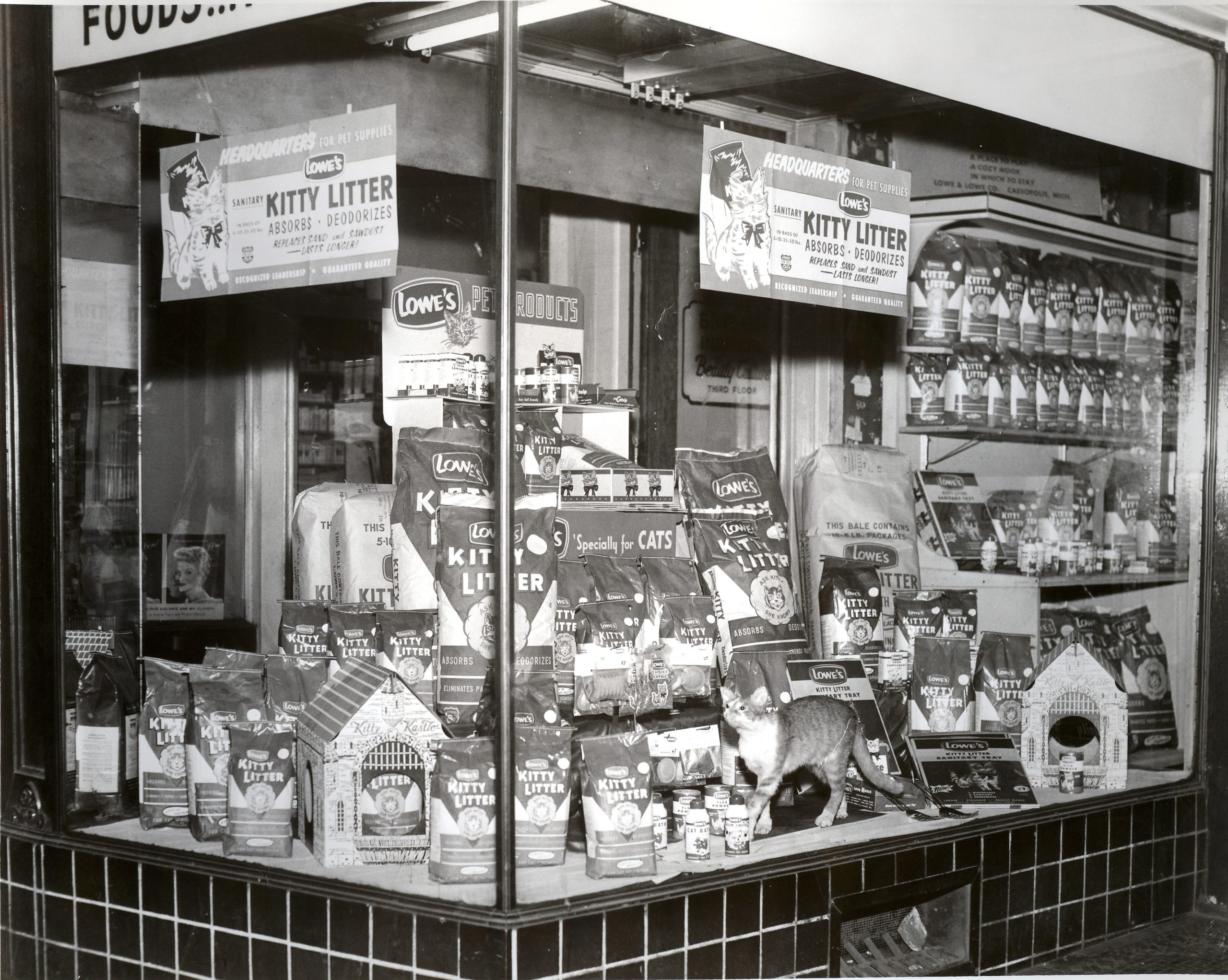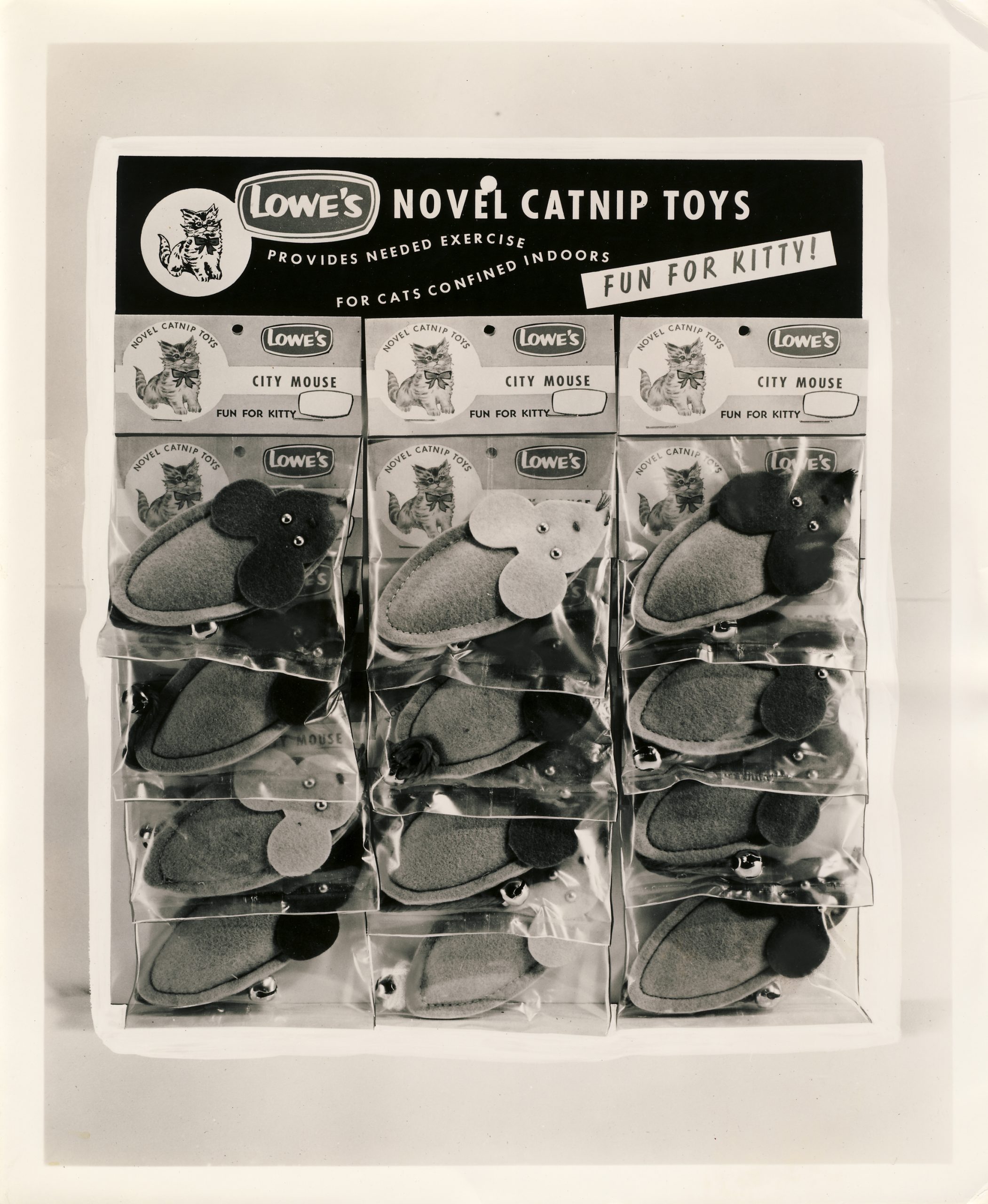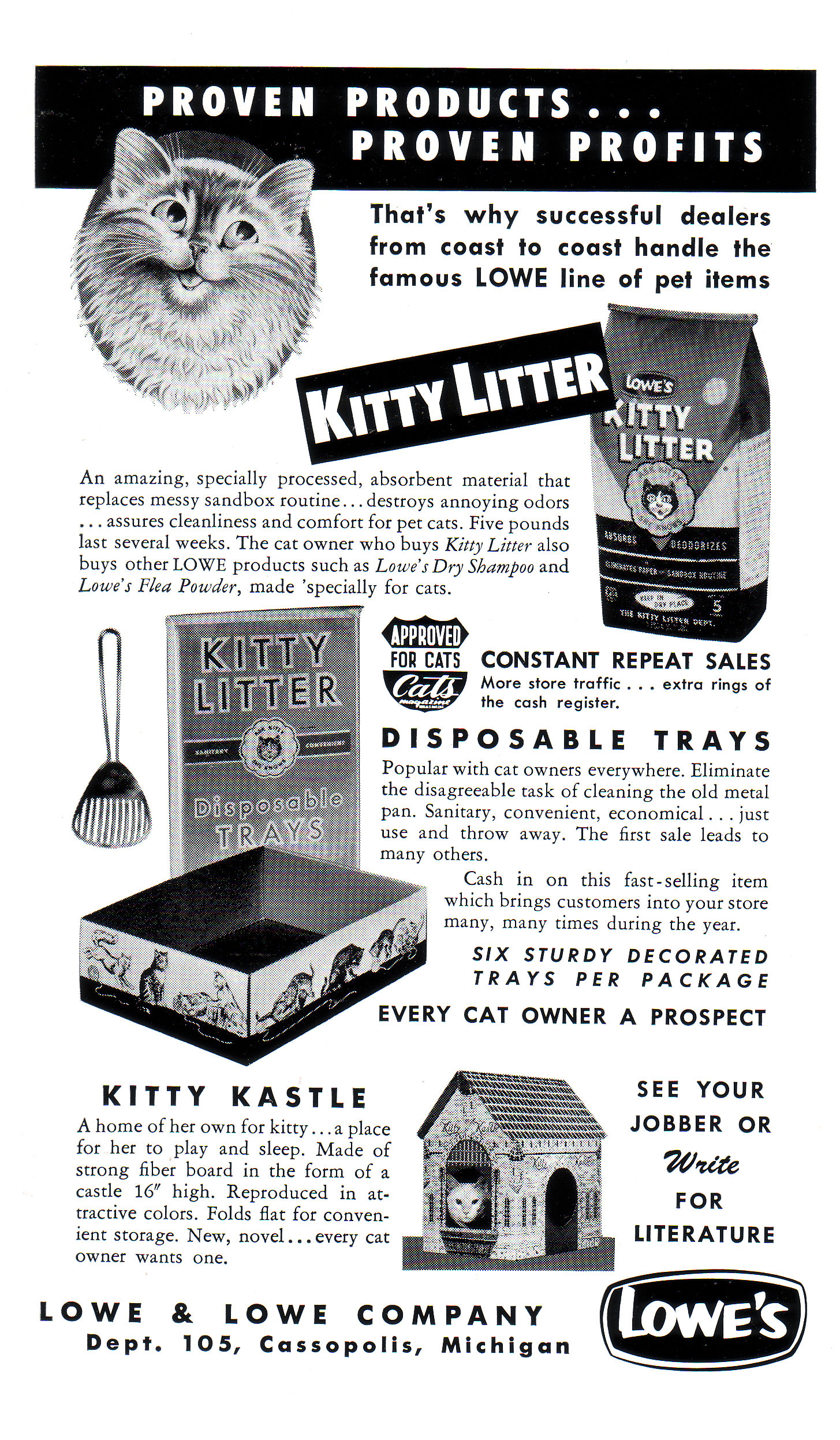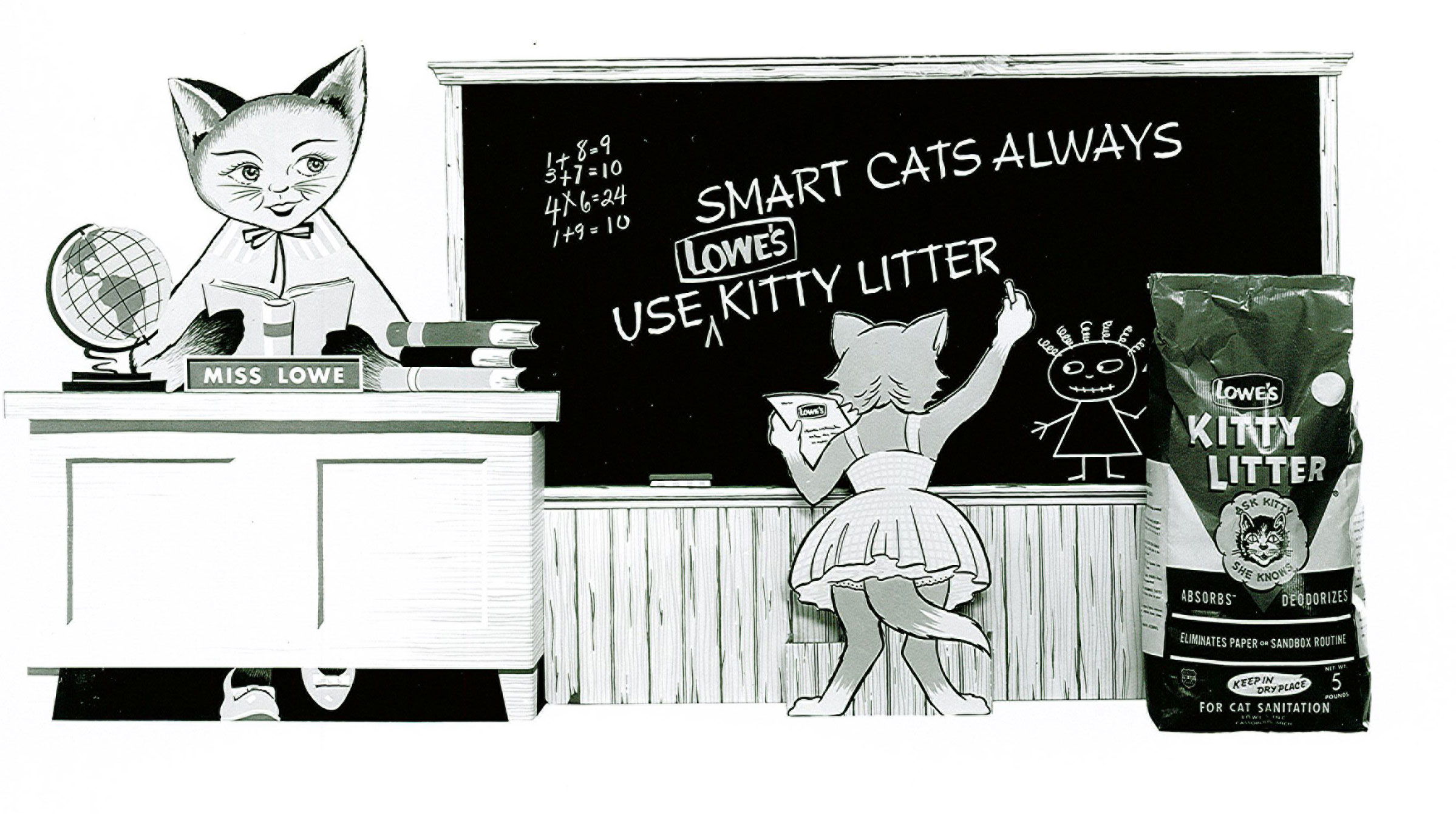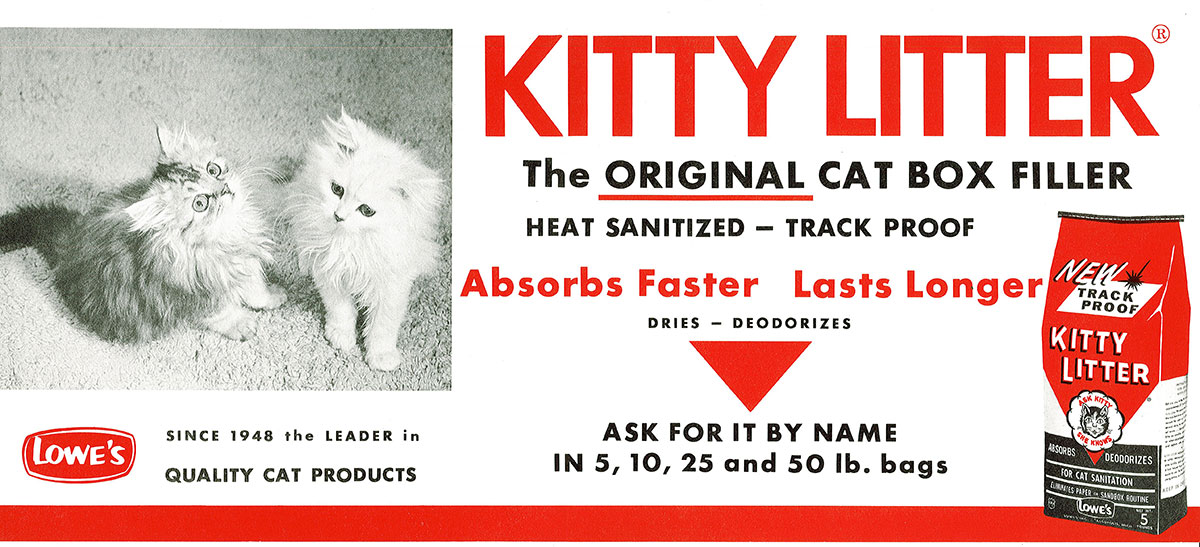Getting bigger
Product expansion and savvy marketing helped Ed Lowe win both new and repeat customers. In addition to Kitty Litter, he had introduced a complete line of feline products that included sanitary disposable trays, shampoos, flea powder and cat toys. Ed placed print and mail-orders ads in pet trade magazines, made dealer aids available through jobbers and created incentive programs that offered bonuses to retailers with the greatest sale volume.
National distribution also played a key role in Kitty Litter’s success. In the early 1950s, most cat-box-filler was sold directly to small pet stores through regional distributorships. Yet Ed created an informal broker network that enabled him to scale sales quickly: After establishing 15 to 20 customers in a new territory, he would find a local wholesaler to buy a train-car load of Kitty Litter to supply those retail accounts — and open new ones. This enabled Ed to progressively tap larger markets, from local cat owners to regional pet stores to mail-order customers and commercial accounts across the country.
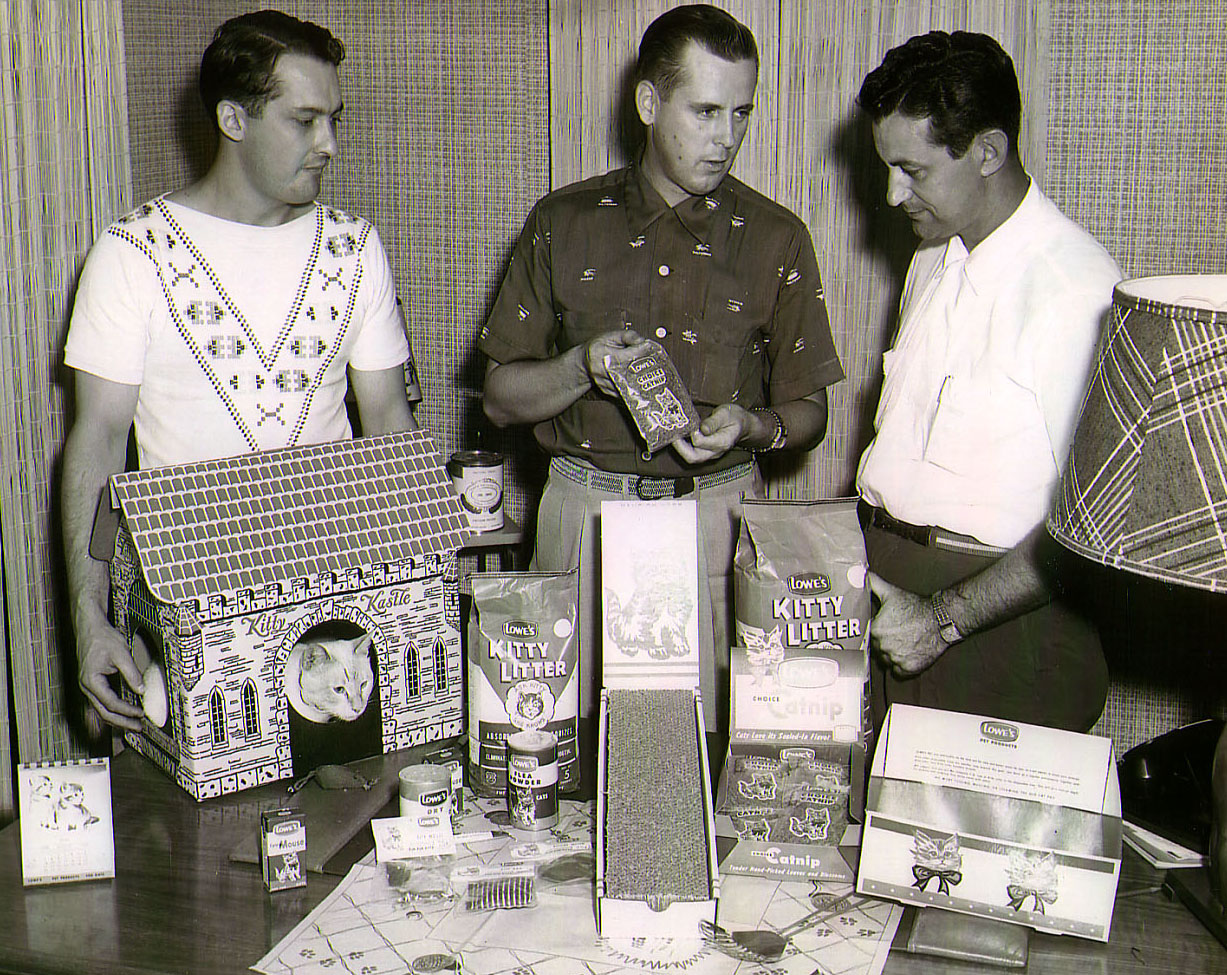
In 1954 Ed introduced a new brand of cat-box-filler, Tidy Cat®, which was sold exclusively in supermarkets. Kitty Litter was then positioned as a boutique brand for pet stores and veterinarians. Although differentiating a core product through branding is now an accepted marketing practice, it was a novel approach at the time.
To meet growing demand, Ed began to increase manufacturing efficiencies. In 1951 he moved his packaging operation from southwest Michigan to a facility in Paris, TN, to be closer to the Southern Clay Co., which provided raw material to his company. In 1958 Ed purchased a manufacturing facility and mining tract in Olmsted, IL. This was a big milestone that enabled him to engage in vertical integration of mining, process and packaging.
